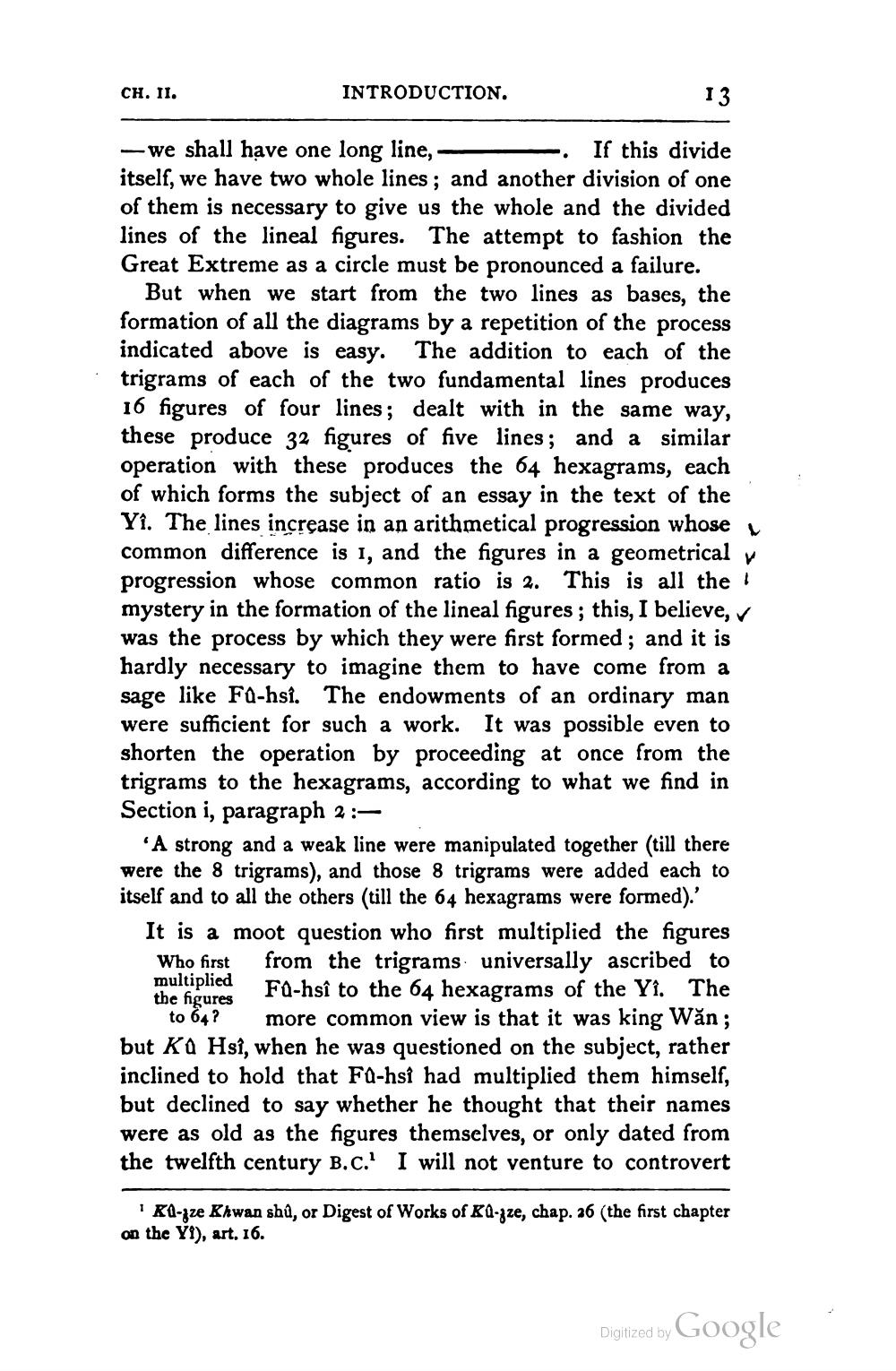________________
CH. II.
INTRODUCTION.
13
- we shall have one long line,
If this divide itself, we have two whole lines; and another division of one of them is necessary to give us the whole and the divided lines of the lineal figures. The attempt to fashion the Great Extreme as a circle must be pronounced a failure.
But when we start from the two lines as bases, the formation of all the diagrams by a repetition of the process indicated above is easy. The addition to each of the trigrams of each of the two fundamental lines produces 16 figures of four lines; dealt with in the same way. these produce 32 figures of five lines; and a similar operation with these produces the 64 hexagrams, each of which forms the subject of an essay in the text of the Yi. The lines increase in an arithmetical progression whose common difference is I, and the figures in a geometrical v progression whose common ratio is 2. This is all the mystery in the formation of the lineal figures; this, I believe, v was the process by which they were first formed; and it is hardly necessary to imagine them to have come from a sage like Fu-hsî. The endowments of an ordinary man were sufficient for such a work. It was possible even to shorten the operation by proceeding at once from the trigrams to the hexagrams, according to what we find in Section i, paragraph 2:
"A strong and a weak line were manipulated together (till there were the 8 trigrams), and those 8 trigrams were added each to itself and to all the others (till the 64 hexagrams were formed).' It is a moot question who first multiplied the figures Who first from the trigrams universally ascribed to multiplied the figures
FQ-hsî to the 64 hexagrams of the Yỉ. The to 64? more common view is that it was king Wăn; but Ka Hsî, when he was questioned on the subject, rather inclined to hold that Fa-hsî had multiplied them himself, but declined to say whether he thought that their names were as old as the figures themselves, or only dated from the twelfth century B.C. I will not venture to controvert
R1-gze Khwan shů, or Digest of Works of K4-zze, chap. 36 (the first chapter on the Yi), art. 16.
Digitized by
Digitized by Google




